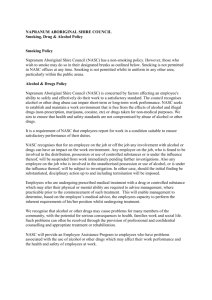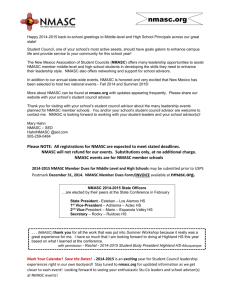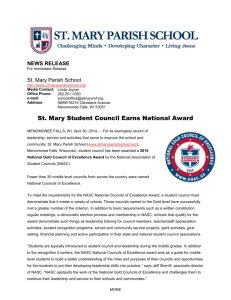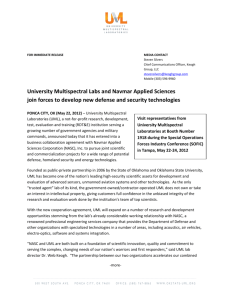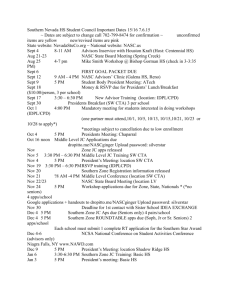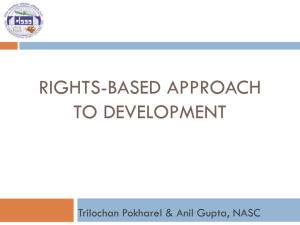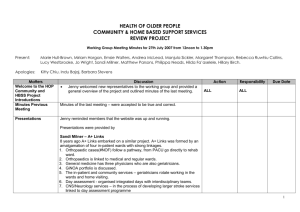Right Based Approach,Mr. Trilochan Pokharel
advertisement
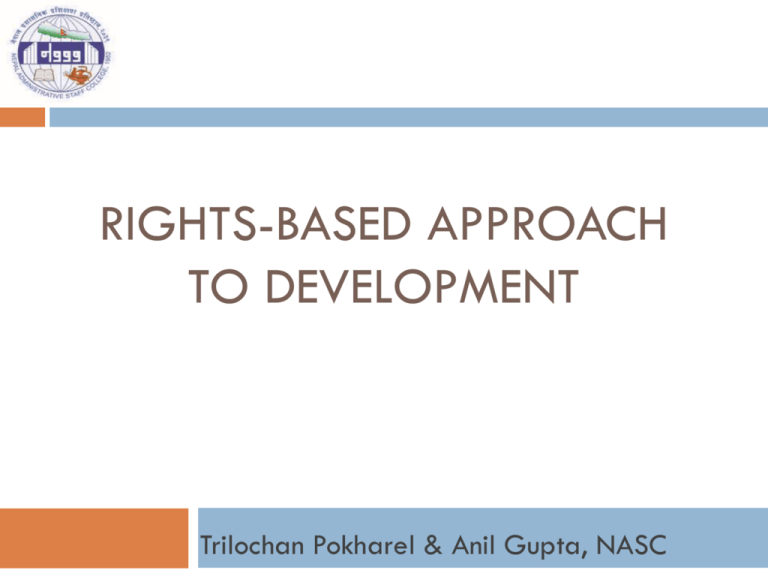
RIGHTS-BASED APPROACH TO DEVELOPMENT Trilochan Pokharel & Anil Gupta, NASC Presentation Outline 2 1. 2. 3. 4. 5. Policy Discourse Principles and Concept of RBA Application of RBA Issues about RBA Conclusion NASC, 2015 3 NASC, 2015 4 NASC, 2015 5 NASC, 2015 6 NASC, 2015 7 NASC, 2015 8 NASC, 2015 9 NASC, 2015 Policy Discourse 10 Charity Approach Needs Approach Rights-based Approach Focus on input not outcome Focus on input and output Focus on process and outcome Emphasizes increasing charity Emphasizes meeting needs Emphasizes realizing rights Recognizes moral responsibility of rich towards poor Recognizes needs as valid claims NASC, 2015 Recognizes individual and group rights as claims toward legal and moral duty-bearers Contd… 11 Charity Approach Needs Approach Rights-based Approach Individuals are seen as victims Individuals are objects of development interventions Individuals and groups are empowered to claim their rights Individuals deserve assistance Individuals deserve assistance Individuals are entitled to assistance Focuses on manifestation of problems Focuses on immediate causes of problems Focuses on structural causes and their manifestations NASC, 2015 Generations of human rights 12 First generation rights - civil and political (CP) rights (the right to a trial, not to be tortured), Second generation rights - economic, social and cultural (ESC) rights (the right to food, housing, a job) Third generation rights – environmental security, development Fourth generation –??? NASC, 2015 Who is right-holder? 13 A rights-holder, is entitled to rights is entitled to claim rights is entitled to hold the duty-bearer accountable has a responsibility to respect the rights of others NASC, 2015 14 Concept of RBA and Guiding Principles NASC, 2015 15 NASC, 2015 Concept of RBA 16 Recognizing people’s needs as rights (i.e. not only do people have a need for clean drinking water but they also have a right to it). It shifts focus of development from servicing needs to building capacity of individuals and communities to understand, claim and fulfill their rights. It is conscious and systematic integration of rights and principles into development work. NASC, 2015 Contd... 17 It emphasizes and deepens participation. It empowers marginalized communities. It encourages local ownership of development programmes. It leads to greater accountability from all actors at all levels. It provides tools for dialogue and engagement with duty-bearers. NASC, 2015 Guiding Principles of RBA 18 Universality and inalienability Indivisibility Interdependence and interrelatedness Equality and non-discrimination Participation and inclusion Accountability and the rule of law NASC, 2015 Why RBA to development? 19 Normative reasons Programme reasons RBA puts values and politics at the centre of development A vision of what ought to be A means to ensure accountability including non-state actors Rights imply duties and duties demand accountability Ethical reasons Exposes power relationships in society Sharpens the political edge of participation NASC, 2015 What can we do with RBA? 20 RBA to development sets the achievement of human rights as an objective of development. It uses thinking about human rights as the scaffolding of development policy. It invokes the international apparatus of human rights accountability in support of development action. NASC, 2015 Essential Human Rights to Development 21 Human rights necessary for survival and dignified living include: The rights to life and liberty The right to a standard of living adequate for health and wellbeing of the individual and his/her family The right to social protection in times of need The right to the highest attainable standard of physical and mental health The right to work and to just and favourable conditions of work The rights to food, and housing The rights to privacy and to family life NASC, 2015 Contd... 22 Human rights also cover those rights and freedoms necessary for human dignity, creativity and intellectual and spiritual development, for example: The right to education and to access to information Freedoms of religion, opinion, speech, and expression Freedom of association The right to participate in the political process The right to participate in cultural life NASC, 2015 Contd... 23 They also include those rights necessary for liberty and physical security, for example: Freedom from slavery or servitude The right to security of person (physical integrity) The right to be free from arbitrary arrest or imprisonment Freedom from torture and from cruel, inhuman or degrading treatment or punishment. NASC, 2015 Contd... 24 Cross-cutting are the twin principles of the equal rights of women and men, and the prohibition of discrimination of any kind as to race, colour, sex, language, religion, political or other opinion, national or social origin, property, birth or other status. NASC, 2015 25 Application of RBA NASC, 2015 Human Rights Dimensions 26 Aspects of HR Respect Protect Fulfill Civil and political rights Torture, extrajudicial killings, disappearance, arbitrary detention, unfair trials, electoral intimidation, disenfranchisement Measures to prevent non-state actors from committing violations, such as torture, extrajudicial killings, disappearance, abduction, and electoral intimidation. Investment in judiciaries, prisons, police forces, and elections, and resource allocations to ability NASC, 2015 Human Rights Dimensions 27 Aspects of HR Respect Protect Fulfill Economic, social and cultural rights Ethnic, racial, gender or linguistic discrimination in health, education, and welfare and resource allocations below ability Measures to prevent non-state actors from engaging in discriminatory behaviour that limits access to health, education, and other welfare Progressive realization Investment in health, education, and welfare, and resource allocations to ability NASC, 2015 A process example… 28 NASC, 2015 Some questions with human face! 29 Are human rights relevant to your work? RBA to development planning is about safeguarding basic rights both during planning and implementation and should be a guide in programme design and resource allocation at all levels. NASC, 2015 Contd… 30 Is there human face visible in your planning? Pro-people planning Participation Voice Has your plan ensured quality growth? Participation Pro-poor growth Reducing inequality Sustainable growth NASC, 2015 Focus Area… 31 Most Vulnerable Root Causes Rights-holders and duty bearers Empowerment NASC, 2015 RBA – a crosscutting issue 32 NASC, 2015 Process of RBA 33 NASC, 2015 Process 34 NASC, 2015 Mainstreaming rights into development 35 Change the view of development (e.g. poverty) View development as question Form, mobilize and empower peoples organizations Ensure equal access, control and ownership over public resources Mobilize public resources in a sustained and proper way Regarding service receivers as the strength NASC, 2015 Issues related to RBA 36 Hierarchy of rights Balancing individual and collective rights (and responsibilities) Progressive realization- resource constraints Role of international and non-state duty bearers Measuring accountability Legal status of accountability Planning process- bottom-up vs top down Policy analysis – macro vs micro NASC, 2015 What determine application of RBA 37 Ability factors – governance, society and international systems Willingness factors – commitment, confidence, values Instrumentality factors – moral, legal and technomanagerial instruments Environmental factors NASC, 2015 38 NASC, 2015 Conclusion 39 Owners of resources are the people Poor, women, Dalits, victimized and the ethnic minorities must get equal opportunity An environment where people can get education, health services, social security and freedom to participate in politics must be made Participation must be broad and meaningful NASC, 2015 Contd... 40 Active participation of the targeted people is a must in the decision making process of every development activities Access to resource and control over it must be vested upon the poor and the voiceless people Enhance self reliance and help each other to solve common problems Establish basic needs as basic rights Outcomes and processes NASC, 2015 Suggested readings 41 McInerney Lankford, Siobhan & Sano, Hans-Otto, 2010, Human Rights Indicators in Development: An Introduction, Washington DC: The World Bank. Boesen, J. K., & Martin, T., 2007, Applying A Rights-Based Approach: An International Guide for Civil Soceity, Copenhagen: The Danish Institute for Human Rights. National Planning Commission, 2011, Three Year Plan 2010/112012/13, Kathmandu: National Planning Commission. UNDP, 2006, Applying A Human Rights-Based Approach to Development Cooperation and Programming, New York: UNDP. NASC, 2015
